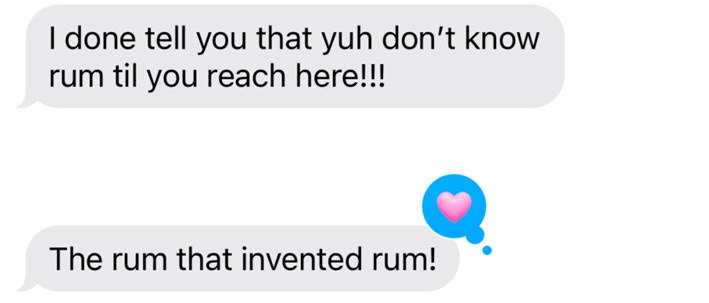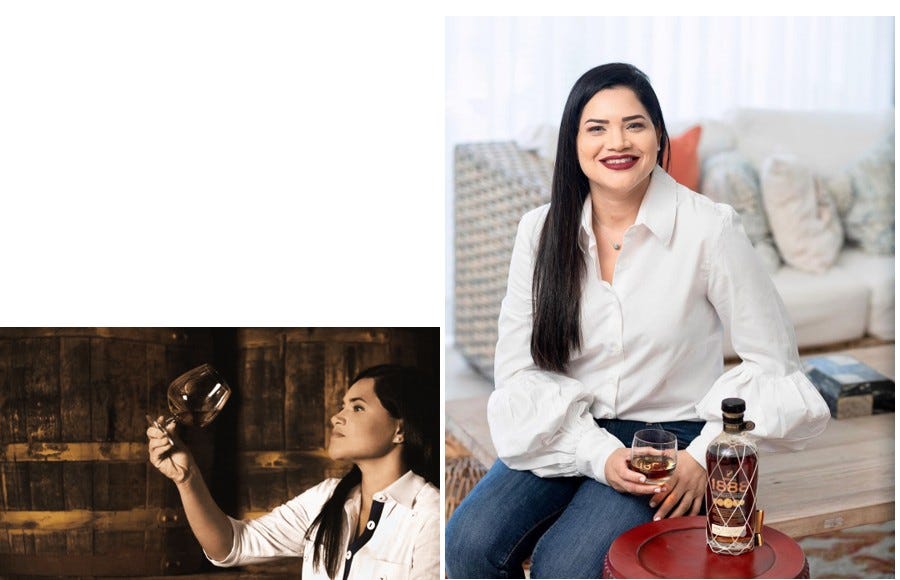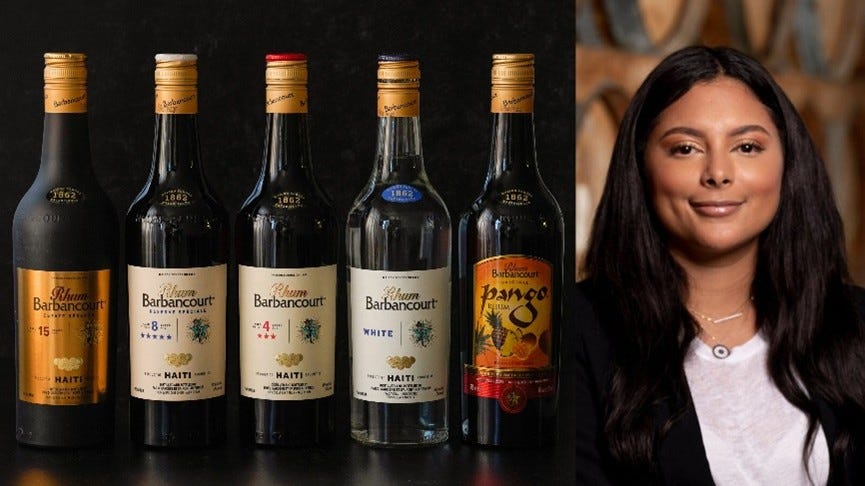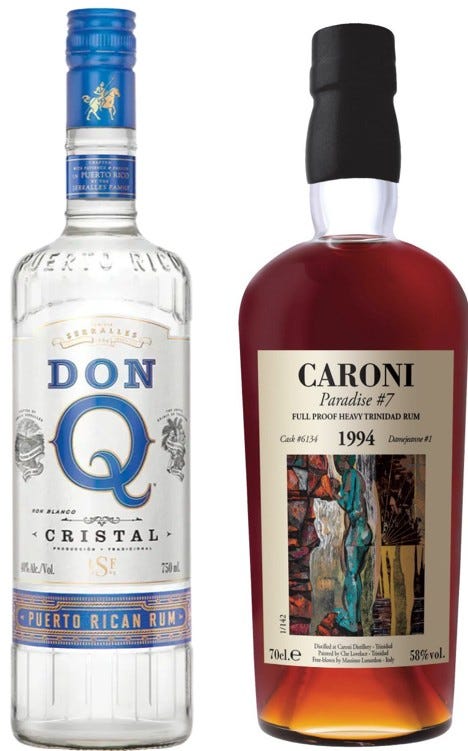Part A: What is Rum? (1/3)
A warm spirit explaining events, feelings, moods and settings. Rum, therefore, is everything
Note: Every rum (review) article going forward will be split into:
Part A: Why you may enjoy the spirit, what would inspire someone to try
Part B: How it all came together (history & technical information)
A, for most, is the priority. But I know that many still want to understand B.
Only this article series will feature a Part B (History) and a Part C (Technical). More digestible.
Part A – Nothing but the feels.
We start with a story. At the end of January, I spoke with a FinTech entrepreneur/partner, let’s call him Donegal (for privacy). He told me a family tale regarding his grandfather that went like this…
—> Out of pure economic necessity and survival, Grandpa migrated to London in search of work/opportunity in the 1950s, becoming a roofer
—> His alcoholic beverage of choice for most of his life was whiskey
—> In the 50s, there was a bad flu going around town (likely the 1951 Influenza Epidemic, England and Wales, Canada, and the United States) that was taking out a lot of people
—> His grandfather became very sick, so his Site Manager told him to go to a specific shop, get a particular bottle of rum, drink the entire bottle, and return to the site in West London by the a.m.
—> The next day, Grandpa was in full health again
—> From the '60s onward, Grandpa became a fervent rum-only drinker because he considered it the beverage that saved his life
—> Donegal can’t remember what rum it was, nor does he think his family remembers. They just know that it was a “dark rum”
Now, between Donegal and the spelling of whiskey with an “e,” the nerdy-spirit people would have already guessed. But I’ll reveal the second-most important point of the story (the first being Grandpa stayed alive): pops was/is Irish, the people we – today – stereotype as faithful whiskey and Guinness drinkers.
But was it always so?
“In 1768, Barbadian planter George Frere wrote that 1.4 million gallons of Barbados rum had been “shift to London, Bristol, Liverpool, Lancaster, Falmouth, Whitehaven, and most other parts of Great Britain; [but that] the rum is usually re-shipt to Ireland.” As a result of the new measures, the Irish increasingly became a nation of rum drinkers. Between 1763 and 1772, Ireland imported an annual average of about 1.4 million gallons of rum.” – Frederick H. Smith, Caribbean Rum
Before I upset my Irish friends from near and far, I’ll say this…let’s get back to rum =)
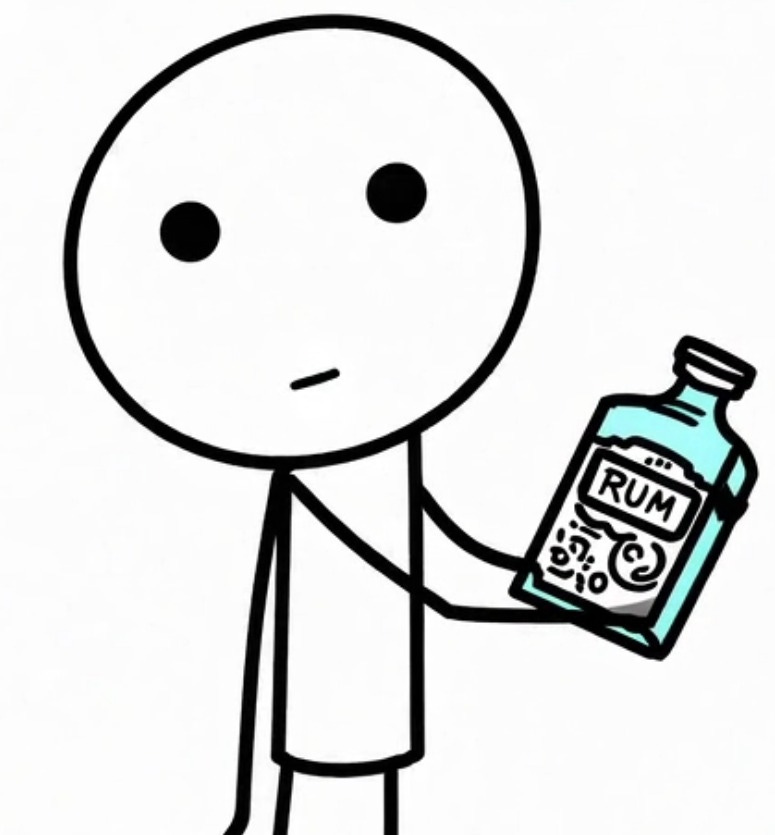
Rum is inimitable. A spirit with centuries of trial and error, ultimately landing us on the artisanal product(s) consumed today. Its irreplaceability, however, is heavily guided by the soil, water, and climate of the country in which the liquid is produced. The spirit's taste proves its mastery, though the opposite is also true (mass market products, subpar taste, pumped out in droves because it reaps higher revenue at a faster clip).
Rum is world history, traced by sugarcane’s origins and forced travels from sea to sea, coast to coast. From Antigua in the Caribbean to Suriname in South America, to Mexico in Central America, to Sicily in Europe, to Mauritius in Africa, to the Philippines in Asia, to Australia in…Australia, to Fiji in the Pacific Islands, and to Louisiana in the U.S., the tale of sugarcane and rum is soil-deep in the fabric of the above countries (and their many neighbors). In that way, rum is everyone’s spirit, even if you aren’t aware of it.
Rum also has a dark history. The “white gold” (sugar) – and later rum – at the center of the Triangle Trade and Middle Passage, fueling the grueling plantation system in the colonial Americas. That hard-labor legacy lasted through the 20th century, as Edwidge Danticat noted in her historical fiction novel, the farming of bones: “the cane life” for Haitian migrant workers in the Dominican Republic went by the same name as her book, or travay tè pou zo in Kreyòl. Article for another day, outstanding book & author.
Rum is a deep sense of pride. In the least narcissistic way possible, speaking on behalf of the region (if I may), the Caribbean is the spirit, soul, flag-waver, torchbearer, and supreme advocate of rum. So much so that the uninitiated often associate “real rum” with having a footprint in an island nation and nowhere else. While this is not true, there’s good historical reason for that line of reasoning…more on that in Part B. More on the history of rum and the region will generally be featured in another article, given my recent reading of Frederick H. Smith, Caribbean Rum.
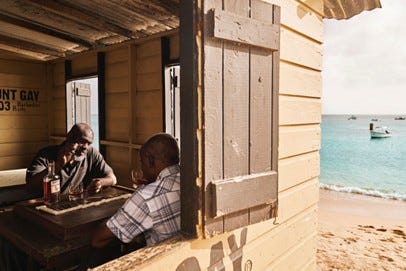
Rum and the Caribbean are like hand and glove. The staple drink at parties and festivals, funerals and gatherings, shops and verandas, there is a reason that people from the Caribbean say #wearerumpeople. And they verbally spar over these things like NY’ers do about their boroughs. But as is the case here and there, the two groups will turn on outsiders who try to get involved in the familial word-tussling.
A good friend (from Barbados), we’ll call her Delusional The Loyalist (for privacy) –
Bajans love their rum because they are under a rum-induced spell Barbados is considered the stomping ground of rum production. The Madeirans are screaming right now because the story is a little more complex than that, but big up to my Bajans. We’ll get to the history in Part B, I promise. A reminder that historical recordings are deeply fallible because they are recorded by human (fallible) beings. In most cases, the recorder was of social status, means, and influence to be the word-spreader, at least historically speaking, notwithstanding archaeological evidence, etc.
One of the pivotal figures keeping Bajans in that rum-induced hysteria of Barbados rum and current Master Blender of Mount Gay, Trudiann Branker –
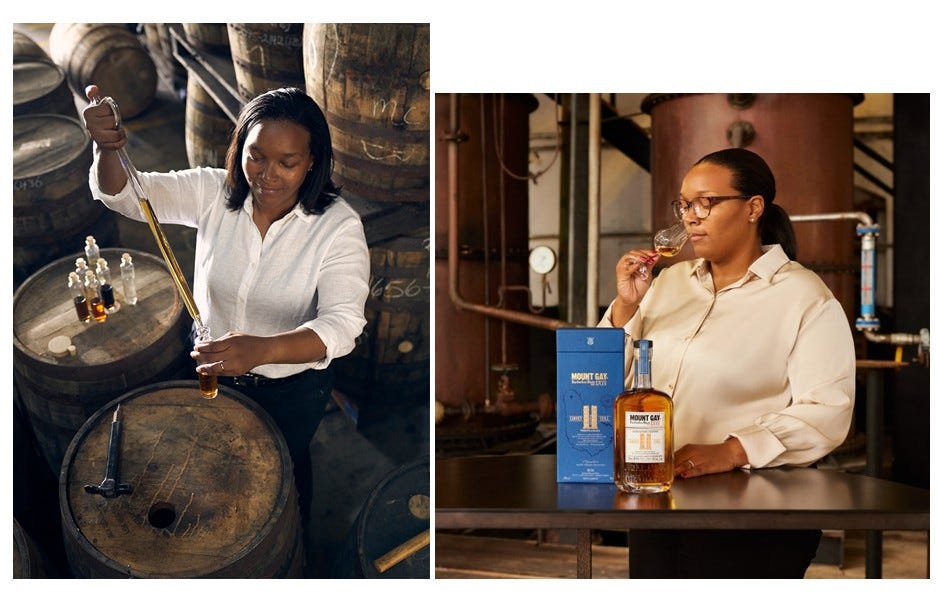
Rum drinkers can be identified by their beverage. Let’s take a brief but entertaining interlude. A deluge of media highlighting the liquid, its stomping grounds, and the leaders behind the spirit…
That net on the bottle is a dead giveaway. We pay homage to the person responsible for the liquid, La Maestra Ronera, Jassil Villanueva –
Source: TikTok x @chapavelli..876
I am in tears, “yu nuh wah feel…up deh” (Note: Get a Jamaican/someone from the English-speaking Caribbean to translate for you)
And to the infamous first woman Master Blender in the spirits industry. The one whose chemist brain and nose has graced the finest of Jamaican rums, Joy Spence –
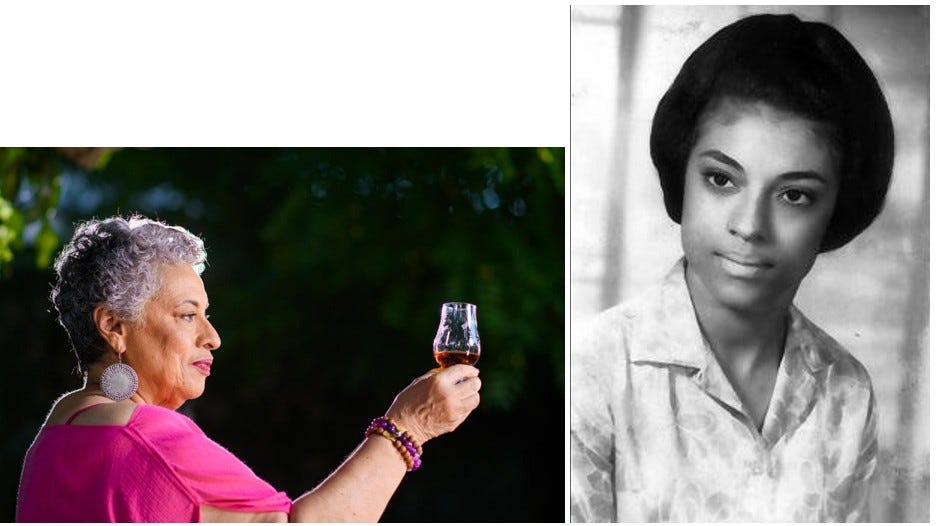
A beautiful video showcasing the heritage and depth of Haitian rum…and this doesn’t even cover the other traditional sugarcane-distilled spirit, Clairin/Kléren.
Sources: Providence Rum & La Maison & Velier
And to the CEO, Delphine Nathalie Gardère, of the most popular Haitian rum brand, Barbancourt –
Identified by just seeing the box (!) –> I have watched this video/listened to this set an embarrassing number of times. It’s that good. Despite the music and slight similarity in setting, I knew immediately it wasn’t Jamaica based on mannerisms, reactions to the music, and the je ne sais quoi. This was further cemented by what took place from about 5:35 – 5:45: a gentleman threw a liquor box at the DJ to pay his respect for the big chune that was played, and then slapped said liquor box on the DJ set. The reddish color of the box signaled immediately to my fake-trained eyes that the rum being consumed at the function was none other than El Dorado, the South Richmond Hill, Queens Guyanese head honcho. Shout out to my Guyanese, from near and far.
And to the Master Blender of Demerara Distillers Limited (owners of El Dorado), Sharon Sue-Hang-Baksh –
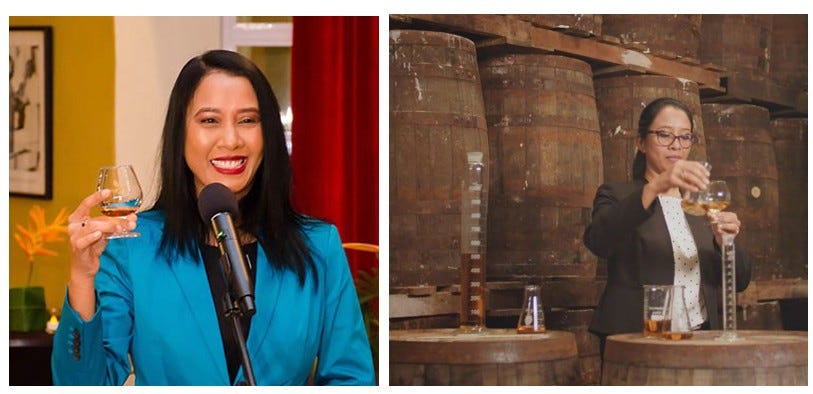
…This is a teeny-tiny sample set of Caribbean rum (country) representatives, I recognize that. However, it’s just enough to whet the palette. Interlude over. Let’s get back to what rum is.
Rum can be cheap, middle of the way, or very expensive. You may have heard that price does not equate to quality many times. For specific categories, that is true. For others, that is not. The pendulum swings for rum and usually errs on the side of poor quality when produced/marketed by industrial players who care more about the bottom line and how to optimize marketing spend to feed the storytelling machine about what rum/story you should buy into. Other factors that determine the price of rums are more micro and macro-economically driven: geo-political/economic stature, trade agreements, supply chain and distribution influence, location (Australians have it bad when trying to get a product to the U.S., as an example), how long the liquid is in a barrel and taxes companies pay (producers passing on those costs to consumers eventually) and, the silent but still important factor, perception of product along the luxury-to-mass continuum. A spirit that goes for thousands of dollars (luxury product) may not follow the Econ 101 rules around supply/demand and price elasticity (how demand and price changes are assumed to interact). Sometimes, there are in-group/out-group behaviors around luxury products. A historical example that will read as ridiculous given this mixed drink’s current availability and universality –
“…[rum punch] was a mixture of rum and various exotic tropical ingredients, such as limes, lemons, sugar, and nutmeg. Only the rich could afford to combine and consume such expensive commodities.” – Frederick H. Smith, Caribbean Rum
Yes, rum punch was once a drink of the European elite planter class in Colonial Americas and the elite in their Old Country in the 1600s, simply because they could afford the ingredients. Raw rum was considered a drink for white indentured servants and enslaved Africans. And so it sometimes goes with the spoken/unspoken rules of luxury goods. The chess pieces will move.
Rum is best understood, at first, when consumed unaged. In that way, it’s a butterfly-to-butterfly spirit rather than a caterpillar-to-butterfly product. I felt like a little bit of a hater saying that. My bad, caterpillars, that was an unnecessary stray.
But I stand by this. To appreciate rum, enjoy the range of unaged – terroir-driven cane juice/Agricole to straight molasses – products. Truly know what the stuff tastes like in its purest form. I find that you appreciate the barrel-aged juices a bit more after learning what the liquid tastes like without the barrel's influence. But remember, no Bourbon Barrel Love (BBL) is needed to transform the spirit into something beautiful. It’s fine as-is. Agave-spirit enthusiasts are nodding in agreement. I see you. Overdoing it? Okay, fine.

Rum is also folklore, captivating stories, myths, outdated associations, and stereotypes. Pirates and privateering naval expeditions. The 20th-century little cousin: rum-running and prohibition. Naval and army rations. No doubt, some of this is likely very true (e.g., the story of New England’s premier rum brand, Privateer). British like, “WHAT ABOUT US?!” Yes, you too, and the indelible mark of “Navy Strength” rum’s association with 57% ABV, gunpowder ignition testing, etc. But what’s made this stick is that these are the stories that have received more airtime, whether it be due to palatability, the storytelling having a bigger wallet (no doubt the case for certain rum brands) or having driven the message home so much that it would look odd to pivot. There are other truthful accounts: African military dynasties who traded those they conquered for rum, likely seen as a status symbol much in the way that Madeiran wine and Spanish brandy were before rum was traded; Ingenuity of enslaved people and their role in turning sugarcane to rum when no one wanted to deal with the “waste products” of the cane; Size of sugarcane plantations, who had the mills nearby, how grueling was the labor, did that have anything to do with small profit margins, and did any of this correlate to what plantations and distilleries survived…Things make more sense to me when you look in every nook and cranny to the extent feasible. But alas, tiki bars, mojitos, sailing the Caribbean, sipping rum on a beach with pineapples. I get it, easier pills to swallow and more straightforward stories to tell. However, since these are adult beverages, I will only relay things to you that I know adults can handle versus insulting your intelligence with captivating and comfortable stories. Reminder: These stories are not untrue. They just lack depth, which, in most business cases, isn't needed for assessing profit potential and customer lifetime value. More importantly, if you feel the warmth of a rum on your chest, and the first thing you think is, let me be in the sun on the beach, then you’re my type of person let’s phone your therapist and I’ll accompany/defend you add a talking point to the weekly agenda.
Rum is political protest music. During World War II, the U.S. occupied Trinidad to protect its oil interests/trade flowing through the Panama Canal, Trinidad, and Venezuela. I assume this was also essentially a directive and cooperative effort between the British and U.S. (allies) since Trinidad didn’t get independence until the early 60s. As a result of the occupation, a famous Calypso artist, Lord Invader (Rupert Grant), penned a song called “Rum and Coca-Cola” to talk about “the mixing of Caribbean and American cultures within the context of prostitution and the heavy U.S. military presence in Trinidad during World War II.” (Frederick H. Smith, Caribbean Rum)
Rum and Coca-Cola
Go down point Cumana
Both mothers and daughters
Working for the Yankee dollar
This becomes even more convoluted when you know that the Cuba Libre cocktail, which is primarily rum and Coca-Cola, became popular with American soldiers following their involvement in the Cuban Revolution/Spanish-American War…and Lord Invader, whose name being Lord Invader is not escaping me (relax), even has a song called Fidel Castro…my head is exploding, is yours?
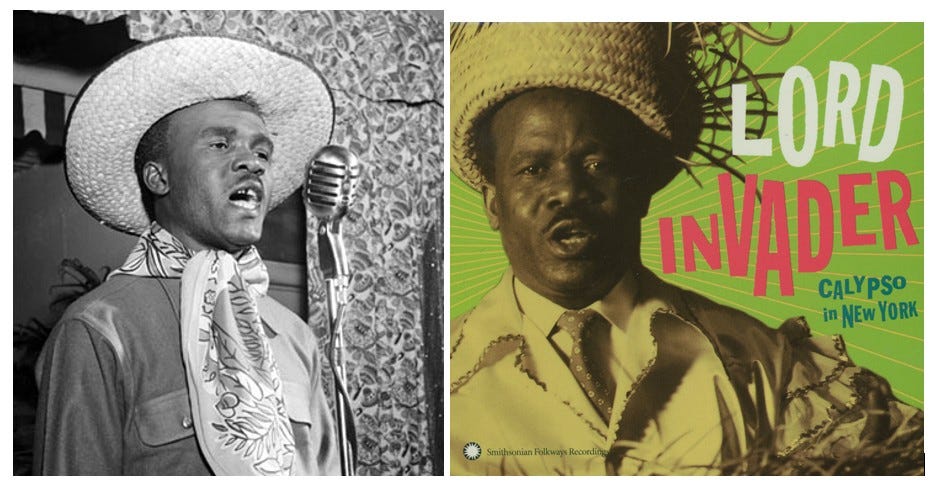
Speaking of Trinidad, let’s show some respect to the retired Master Distiller of Angostura, John Georges (note: can’t find info on who the current MD is)…
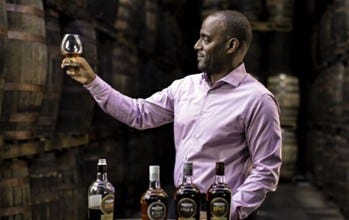
…who took over the reins from none other than Carol Homer-Caesar. Sorry for the spotlight steal, Mr. Georges. Manners and respect. Trying to make a point here =)
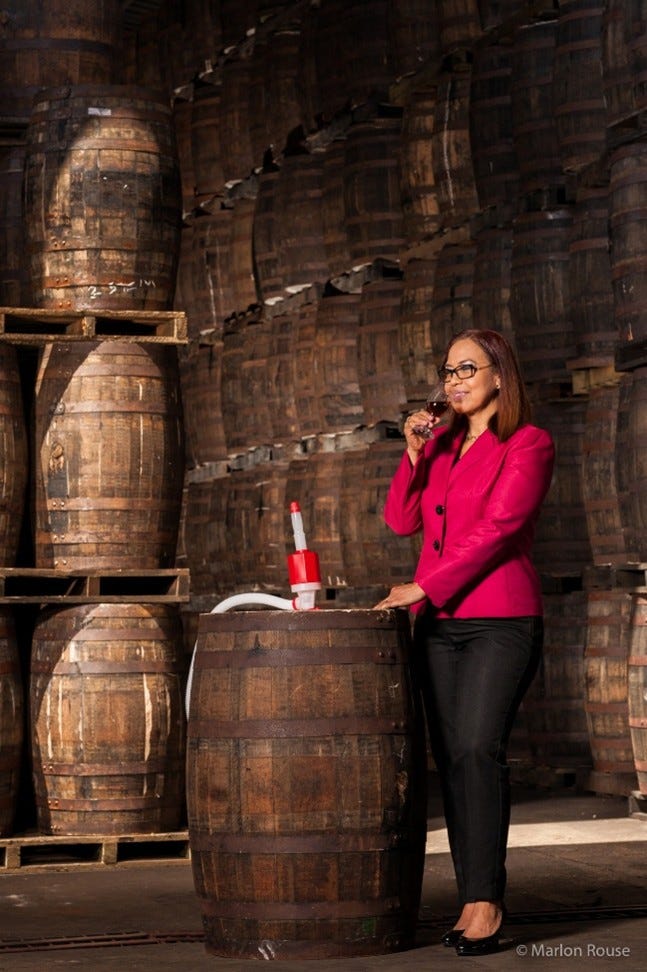
Lord Invader, you’ve inspired me to close Part A with some lyrics of my own (reduce your expectations to nil):
Rum is good.
Rum is bad.
Rum is this.
Rum is that.
Rum is rum.
Rum is rhum.
Rum is ron.
Rum, ultimately, is for the Gourmand.
We drink rum because it’s damn good, first and foremost. The liquid is most enjoyable when creating precious moments, hopefully ones you’ll forget ever so slightly (put the phone away for a second...unless you're reading this on the phone). Give yourself an excuse to reach for that liquid again, enjoy with friends, lover(s), I don’t know your life, and lots of laughter. Try to recreate what you forgot.
But remember,
#rumresponsibly
Part B, next week.






